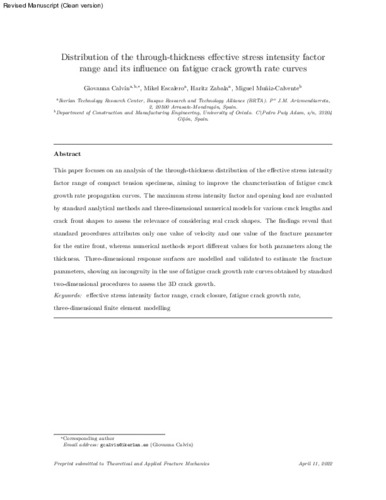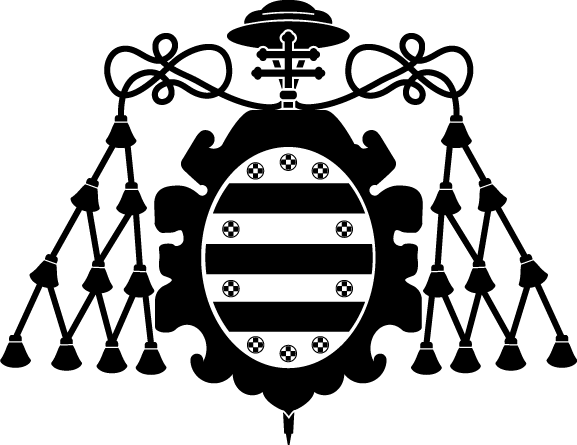Distribution of the through-thickness effective stress intensity factor range and its influence on fatigue crack growth rate curves
Author:
Publication date:
Publisher version:
Citación:
Abstract:
This paper focuses on an analysis of the through-thickness distribution of the effective stress intensity factor range of compact tension specimens, aiming to improve the characterisation of fatigue crack growth rate propagation curves. The maximum stress intensity factor and opening load are evaluated by standard analytical methods and three-dimensional numerical models for various crack lengths and crack front shapes to assess the relevance of considering real crack shapes. The findings reveal that standard procedures attributes only one value of velocity and one value of the fracture parameter for the entire front, whereas numerical methods report different values for both parameters along the thickness. Three-dimensional response surfaces are modelled and validated to estimate the fracture parameters, showing an incongruity in the use of fatigue crack growth rate curves obtained by standard two-dimensional procedures to assess the 3D crack growth.
This paper focuses on an analysis of the through-thickness distribution of the effective stress intensity factor range of compact tension specimens, aiming to improve the characterisation of fatigue crack growth rate propagation curves. The maximum stress intensity factor and opening load are evaluated by standard analytical methods and three-dimensional numerical models for various crack lengths and crack front shapes to assess the relevance of considering real crack shapes. The findings reveal that standard procedures attributes only one value of velocity and one value of the fracture parameter for the entire front, whereas numerical methods report different values for both parameters along the thickness. Three-dimensional response surfaces are modelled and validated to estimate the fracture parameters, showing an incongruity in the use of fatigue crack growth rate curves obtained by standard two-dimensional procedures to assess the 3D crack growth.
ISSN:
Patrocinado por:
The authors would like to express their gratitude to the Spanish Ministry of Science and Innovation for the financial support through the project MCI-20-PID2019-105593GB-I00/AEI/10.13039/ 501100011033. Ikerlan’s research has been supported by CDTI, depending by Ministerio de Ciencia e Innovación, through the ‘‘AYUDAS CERVERA PARA CENTROS TECNOLÓGICOS 2019’’ program, project MIRAGED with expedient number CER-20190001.
Collections
- Artículos [37321]
- Construcción e Ingeniería de Fabricación [504]
- Investigaciones y Documentos OpenAIRE [8276]
Files in this item





